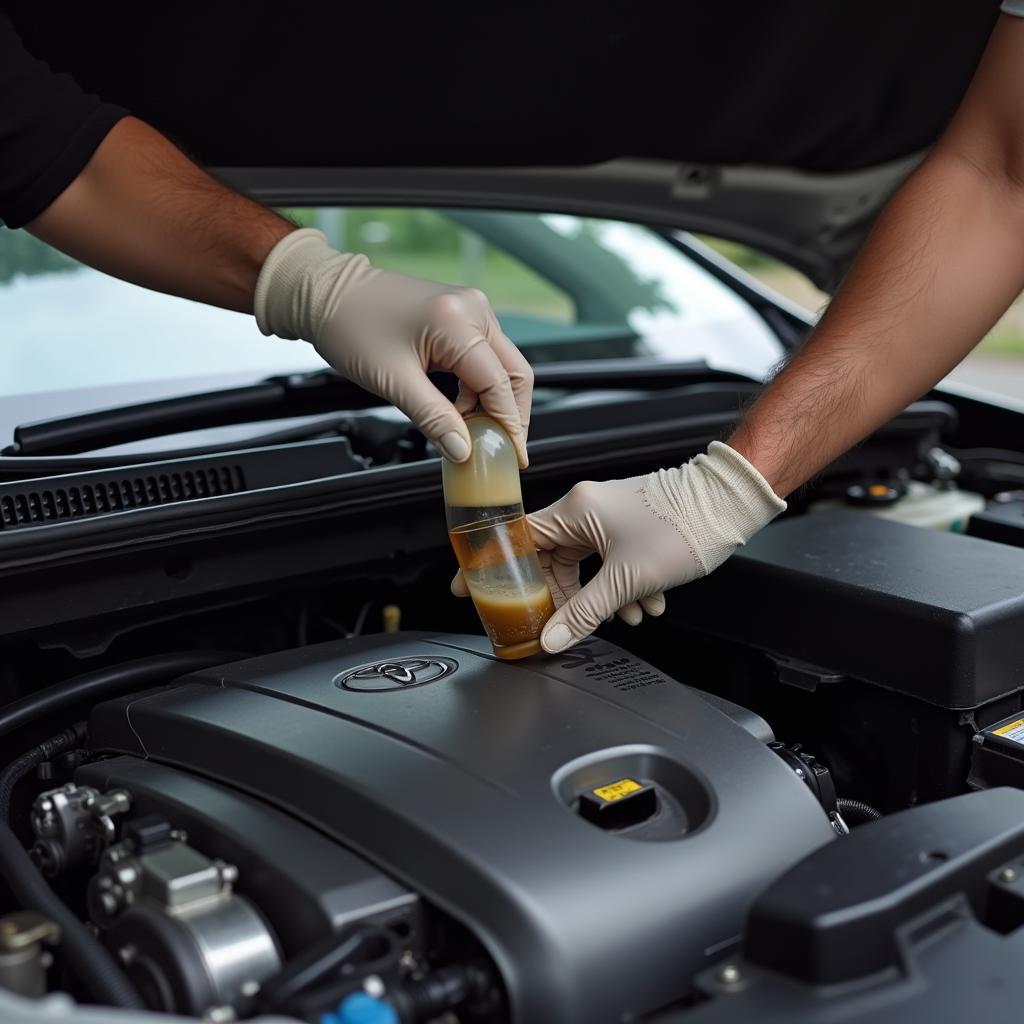If your 1995 Buick Lesabre’s brake warning light is stubbornly illuminated on your dashboard, you’re likely dealing with a common yet potentially concerning issue. This light is designed to alert you to potential problems within your braking system, which is paramount for your safety on the road. While a visit to a mechanic is always recommended for a thorough inspection, there are a few troubleshooting steps you can take to potentially reset the warning light yourself.
Understanding Your Buick Lesabre’s Brake Warning System
Before attempting to reset the brake warning light, it’s crucial to understand why it might be on in the first place. The 1995 Buick Lesabre, like most vehicles, utilizes a straightforward system to monitor brake fluid levels and hydraulic pressure. The most common culprits for triggering the warning light include:
- Low Brake Fluid: This is the most frequent reason. Insufficient brake fluid can indicate a leak in your brake lines, a worn-out master cylinder, or simply a need for a fluid top-up.
- Worn Brake Pads: Brake pads thin out over time. If they’ve worn down to a certain point, a sensor will engage the warning light as an indication that replacement is needed.
- Faulty Parking Brake Switch: Sometimes, the warning light might stay on due to a malfunctioning parking brake switch. This switch is designed to illuminate the light when the parking brake is engaged, but it can sometimes send false signals.
Checking Your Brake Fluid: The First Step
Begin by safely parking your Buick Lesabre on a level surface and engaging the parking brake. Locate the brake fluid reservoir under the hood – it’s typically a translucent plastic container labeled “Brake Fluid.”
Important: Brake fluid is corrosive. Avoid spilling it on your car’s paint.
- Visual Inspection: Check the fluid level through the reservoir. It should fall between the “Min” and “Max” lines.
- Adding Brake Fluid (If Necessary): If the fluid is low, carefully remove the reservoir cap. Using a funnel, add the correct type of brake fluid (consult your owner’s manual) until it reaches the “Max” line.
- Inspect for Leaks: If you find yourself needing to add brake fluid frequently, you likely have a leak. Inspect the area around the master cylinder, brake lines, and near the wheels for any signs of fluid leakage.
“Regularly checking your brake fluid is fundamental automotive maintenance,” says veteran mechanic John Riley. “It’s a quick check that can prevent major braking issues down the road.”
 Mechanic Checking Brake Lines
Mechanic Checking Brake Lines
Resetting the Brake Warning Light
If the brake fluid level is adequate and you haven’t noticed any visible leaks, there’s a chance the warning light might be triggered by a glitch or a minor electrical fault. In such cases, a simple reset might do the trick. Here’s how:
- Disconnect the Battery: Locate your car battery and disconnect the negative terminal using a wrench.
- Wait: Leave the battery disconnected for at least 15-20 minutes. This will allow the vehicle’s electrical system to reset itself.
- Reconnect the Battery: Reconnect the negative battery terminal and tighten the nut securely.
- Test Drive: Start your Buick Lesabre and go for a short test drive. Apply the brakes several times to ensure they are functioning correctly.
If the brake warning light remains on after following these steps, it indicates a more serious issue requiring professional attention.
When to Seek Professional Help
While resetting your brake warning light might provide a temporary fix, it’s crucial to remember that this doesn’t address the underlying cause. If the light returns, it’s a clear signal that a component within your brake system requires attention.
Remember, your safety on the road is paramount. Don’t hesitate to seek professional assistance for a thorough diagnosis and repair of any brake-related issues.

